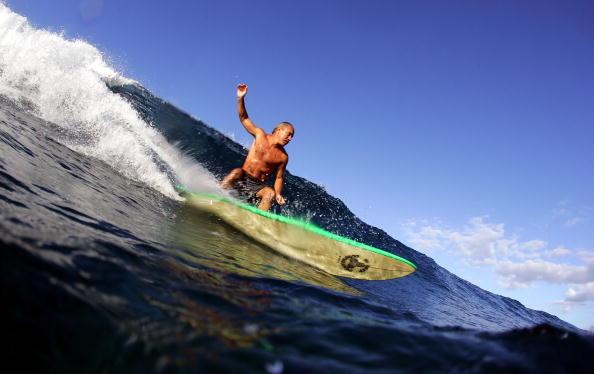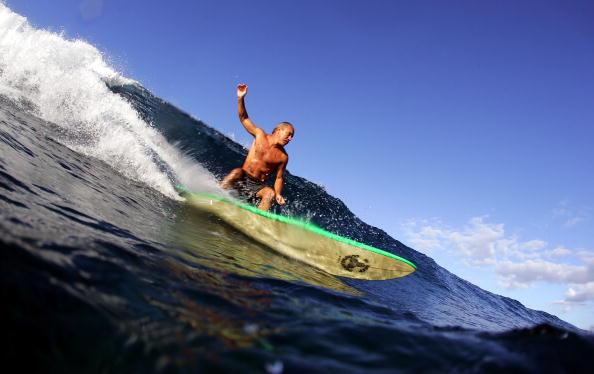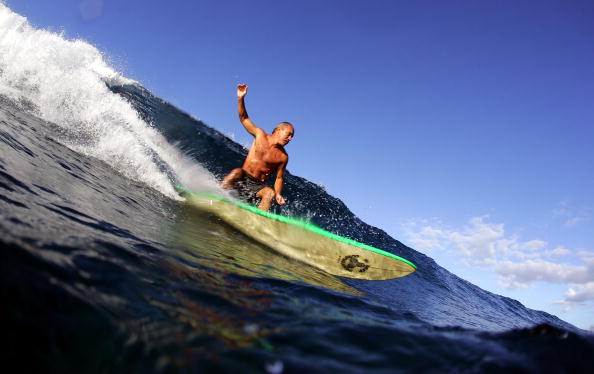Elite surfers undergo surprisingly vigorous physical demands, according to a New Zealand study.
The researchers studied 12 top-level New Zealand surfers using a modified rowing ergometer machine to measure their power outputs and peak oxygen consumption. The surfers were also videoed during heats for two competitions while wearing GPS and heart rate monitors.
“They were a bit reluctant at first because they (the GPS monitors) were a bit bulky,” said lead researcher Oliver Farley at Auckland University of Technology in a press release.
“But after seeing the first round of results they, being competitive guys, wanted to know how they were going against their mates.”
The results showed the athletes spent 54 percent of the time paddling, 28 percent of the time waiting for a wave, and 8 percent of the time riding a wave.
On average, the surfers paddled 950 meters per heat while waiting for a good wave. Interestingly, peak activity happened while surfing rather than while paddling out.
“We thought that their heart rate would peak when they were paddling to catch the wave but it turned out to be when they finished the wave and started the paddle back out,” Farley noted. “That may be due to the adrenaline release.”
The surfers’ heart rates increased to 190 beats per minute, and were over 120 for more than 80 percent of the time. “That told us that paddling around waiting for a wave was more intense an activity than we thought,” Farley said.
The best surfers had the highest power output readings, meaning more power allows them to catch more waves in a heat, and also become less fatigued so they perform better.
“Competitive surfing therefore involves intermittent high-intensity bouts of all out paddling intercalated with relatively short recovery periods and repeated bouts of low-intensity paddling, incorporating intermittent breath holding,” wrote the researchers.
“Surfing-specific conditioning sessions should attempt to replicate such a profile.”
The findings were published in the Journal of Strength & Conditioning Research.
The Epoch Times publishes in 35 countries and in 20 languages. Subscribe to our e-newsletter.







Friends Read Free